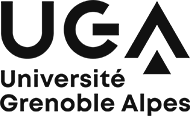For any futher information
- About the recruitment process
Mathys VINCENT, recruitment officermathys.vincent@univ-grenoble-alpes.fr
- About the position
Karine PERRAUT - Chercheur astronome - karine.perraut@univ-grenoble-alpes.fr
Jean-Philippe BERGER - Chercheur astronome - jean-philippe.berger@univ-grenoble-alpes.fr
Why join us
- Have a meaningfull job
- Benefit from the attractiveness of the area.
- Benefit from social adventages.
- Achieve a good work-life balance.
- Be accompanied and supported in your career.
- Work on an inspirative and dynamic.
UGA in numbers
57 000 students
10 800 employees
30 academic divisions and units
71 research units, 13 Labex and 7 Equipex
www.univ-grenoble-alpes.frThe « HR exellence in research » label
The University obtain the HR exellence in research label in April 2021
2021 which was awarded by the European Commission.
Read more

2021 which was awarded by the European Commission.
Read more

